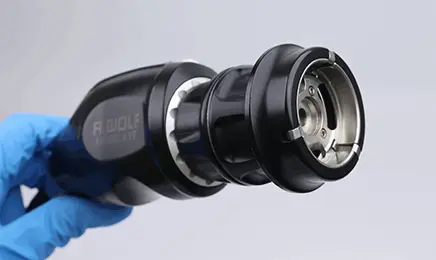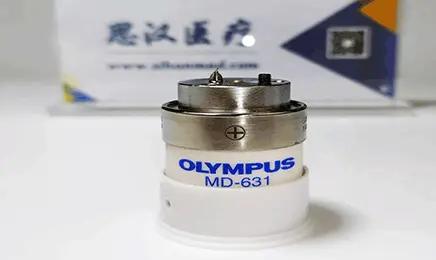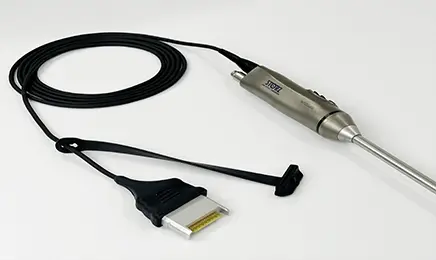Tel: +86-19906868508
E-mail: info@sihanmed.com
Tel: +86-19906868508
E-mail: info@sihanmed.com
A clear image is crucial for surgical precision, yet rigid endoscope camera images can degrade over time. Dirty lenses, being a major cause, require immediate cleaning with specialized solutions. Condensation inside the scope, often due to sudden temperature changes, may also distort visuals. Misaligned optical fibers, if damaged, further impair clarity. To prevent fogging, pre-warming the scope in sterile solution helps. Not only improper sterilization but also abrasive cleaning can scratch lenses. There are cases where residual debris clogs the light path, necessitating disassembly. Inverting the scope gently may dislodge particles. Only by maintaining proper handling can operators avoid costly repairs. Far more serious is internal optic damage, requiring professional servicing.
Dark spots in the rigid endoscope camera often signal particle contamination or broken fibers. Dust accumulation, settling over time, blocks light transmission. There might be cracked relay lenses, leading to shadowy areas. Even minor impacts can fracture fragile optical components. Using compressed air carefully, one can remove loose debris. Should the issue persist, a fiber bundle replacement may be needed. Far worse is delamination—where glue layers separate, causing permanent damage. Inspecting the light post ensures no misalignment exists. Only when all else fails should full disassembly be attempted. Rather than risking further damage, consult a certified technician.
Flickering or dim lighting often stems from faulty bulbs or unstable power supplies. There could be a damaged fiber optic cable, disrupting illumination. Overheating, a common issue, shortens bulb lifespan significantly. Replacing halogen or LED bulbs promptly prevents sudden blackouts. Loose connections, if ignored, cause intermittent power loss. Not only the bulb but also the power adapter might be defective. Inspecting the light guide, one may find frayed edges. Were the cables checked, many failures would be avoidable. Far more critical is a failing light generator, requiring professional repair. Instead of makeshift fixes, always use OEM parts.
Minor scratches can often be polished out, whereas deep gouges demand lens replacement. Improper wiping, using rough materials, exacerbates damage. There is a technique involving diamond paste for minor refinishing. Storage in padded cases, preventing collisions, is vital. Had the lens been cleaned correctly, most scratches wouldn’t occur. Anti-fog coatings, when damaged, must be reapplied professionally. Far better than DIY fixes are factory-grade repairs. Only trained technicians should handle optical resurfacings. Rather than risking further harm, seek certified service centers. Without proper care, even high-end scopes degrade quickly.
Intermittent signal drops often stem from worn-out cables or corroded ports. There must be secure attachment between the endoscope camera head and coupler. If the O-rings are worn, sealing failure causes signal interruptions. Periodic inspection, preventing unnoticed wear, is essential. Not just the cable but also the camera control unit may malfunction. Tightening connections, though simple, resolves many issues. Far more problematic are internal circuit board failures. Only by using anti-corrosion grease can oxidation be minimized. Instead of forcing connections, ensure proper alignment before insertion.
Moisture ingress, whether from fluids or humidity, risks short circuits and fogging. There should be immediate power disconnection to avoid electrical damage. Leaving the scope wet, corrosion spreads rapidly. Silica gel packs, stored with the device, absorb residual moisture. Had the seals been inspected, many leaks would be caught early. Forced drying with heat, however, can warp delicate components. Far better is controlled vacuum drying. Only in waterproof-rated models can submersion be tolerated. Rather than delaying repairs, send for professional servicing. Without swift action, irreversible damage follows.

With years of dedication to the medical equipment industry, Shengjun He has leveraged his solid professional expertise and keen insight into industry trends to establish Sihan Medical as a leading force in the endoscope repair sector. Prior to founding Sihan Medical, he accumulated extensive experience in medical device maintenance—a foundation that proved instrumental for his entrepreneurial journey. His background spans hands-on equipment repair, technical R&D, and management, granting him comprehensive understanding of medical devices, from their underlying technology to market demands.
This is the last one.


